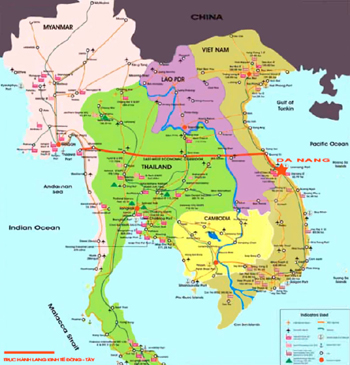
Da Nang is between 15o 55' 20'' to 16o 14' 10'' longitude north, and between 107o 18' 30'' to 108o Asia - Pacific to the world. The city is 765 km south of Ha Noi and 964 km north of Ho Chi Minh City
Situated in the middle of the country, on the transport hub of the north - south highway, rail, sea and air routes, Danang is 764km south of Ha Noi and 964km north of Ho Chi Minh City.
The seaport city of Danang borders with the East Sea and has the Tien Sa and Lien Chieu seaports and the Han River port. The seascape is in harmony with nature and creates well-known tourist zones and resorts in the central region such as My Khe, Bai But, Bac My An (with Furama Resort), Non Nuoc and Nam O - Xuan Thieu beaches, Ba Na Tourism Resort.
Danang is also at the centre of four world cultural heritages; Hue Citadel, Hoi An Old Town, My Son Cham Sanctuary and Phong Nha Cave - Ke Bang National Park. Important trading centres of Southeast Asias and Pacific countries are within a 2,000 km radius of Danang. The city has enough conditions regarding historical traditions, population size, geographical location and infrastructure including an international airport and deep-water seaports (Tien Sa Port: 30,000 DWT vessels), to become one of the important industrial production, commercial and tourism centres of Vietnam and the Southeast Asia. Danang is a city directly responsible to the central government and one of the economic - cultural - scientific and technological centres of the central region of Vietnam. The comparative advantages of the city in the region have become more obvious since the opening of the Hai Van Pass Tunnel and route 14B. It has become an advantageous terminal of the East-West Corridor connecting Vietnam with Laos - Thailand - Myanma.
- City Area: 1,283.42 Km2
- Population: 806,744 người (Year 2007)
- Population Density: 628.58 Persons/Km2



 Location
Location












